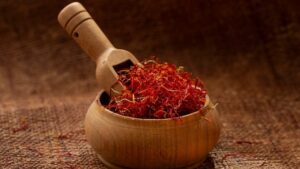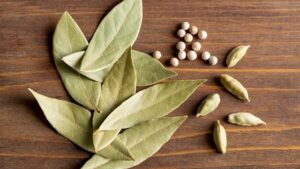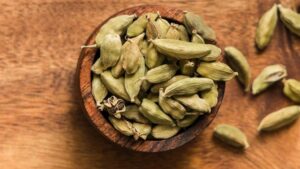Mustard seeds are the small round seeds obtained from the mustard plant, which belongs to the Brassicaceae family. These seeds come in different colors, including yellow, brown, and black, each offering varying degrees of pungency and flavor.

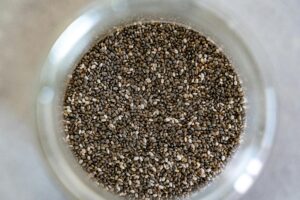
Key characteristics of mustard seeds:
The key characteristics of mustard seeds include:
Varieties:
Mustard seeds come in different varieties, primarily yellow/white, brown, and black. Each variety varies in flavor, pungency, and size. Yellow mustard seeds are mild, while black seeds are the most pungent.
Sizes and Colors:
Yellow mustard seeds are typically larger and have a pale yellow color. Brown mustard seeds are smaller and darker, ranging from dark yellow to brown. Black mustard seeds are the smallest and darkest, almost black in color.
Flavor Profile:
Mustard seeds have a distinct pungent, spicy, and slightly bitter taste. When crushed or ground, they release oils that intensify their flavor and aroma.
Culinary Uses:
Mustard seeds are a staple spice used in various cuisines globally. They can be used whole, crushed, or ground into powder. They are commonly employed in pickling, spice blends, marinades, dressings, curries, and condiments like mustard paste or sauce.
Aromatic Compounds:
Mustard seeds contain compounds like allyl isothiocyanate, responsible for their sharp, pungent taste and the characteristic heat they impart when crushed or mixed with liquid.
Nutritional Content:
Mustard seeds are a source of nutrients such as omega-3 fatty acids, dietary fiber, protein, vitamins (like B-complex vitamins), and minerals (including calcium, magnesium, and selenium).
Preparation:
They can be dry-roasted to enhance their flavor, ground into a powder for various culinary applications, or soaked in liquids like water, vinegar, or wine to create mustard pastes or sauces.
Preservative Properties:
Mustard seeds contain antimicrobial properties due to compounds like glucosinolates, making them useful as natural preservatives in certain food preparations.
Cultural Significance:
Mustard seeds are integral to many cuisines globally, adding depth of flavor, spiciness, and character to a wide range of dishes, and are often a defining element in regional culinary traditions.
Understanding these key characteristics helps in using mustard seeds appropriately in different culinary preparations, allowing their unique flavor and heat to enhance dishes across various cuisines.
Types of Mustard
Mustard comes in various types and forms, each offering unique flavors and uses. Here are the primary types of mustard:
Yellow Mustard (American Mustard):
- Also known as American mustard or mild mustard.
- Made from yellow mustard seeds (Sinapis alba) blended with vinegar, water, spices, and turmeric for its distinct bright yellow color.
- It has a mild, slightly tangy taste and is commonly used in hot dogs, sandwiches, and as a general condiment.
Dijon Mustard:
- Originated in the Dijon region of France.
- Made from brown or black mustard seeds (Brassica juncea) combined with white wine or wine vinegar, spices, and sometimes verjuice (juice of unripe grapes).
- It has a sharp, tangy flavor profile with a bit more heat compared to yellow mustard. Dijon mustard is versatile and used in dressings, sauces, marinades, and glazes.
Whole Grain Mustard (Grainy Mustard):
- Contains whole or partially ground mustard seeds, combined with vinegar and spices.
- Offers a textured appearance due to visible mustard seeds in the condiment.
- Has a robust flavor with a grainy texture, often used in salads, sandwiches, and as a condiment for meats.
Spicy Brown Mustard:
- Made from coarsely ground brown mustard seeds mixed with vinegar, water, and spices.
- It has a stronger and spicier taste compared to yellow mustard, with a grainier texture.
- Often used in deli sandwiches, marinades, and in dishes where a bolder mustard flavor is desired.
Honey Mustard:
- A blend of mustard with honey, vinegar, and sometimes other sweeteners or spices.
- Known for its sweet and tangy flavor profile, used as a condiment, salad dressing, or dipping sauce for chicken tenders and pretzels.
English Mustard (Hot Mustard):
- Typically made from a blend of brown and/or black mustard seeds mixed with water or vinegar.
- Known for its fiery heat and pungency, much stronger than yellow mustard. Often used sparingly due to its intense spiciness.
Asian Mustards:
- Varieties such as Chinese mustard or Japanese mustard offer different flavor profiles and heat levels used in Asian cuisines, especially as a condiment with sushi or dim sum.
Each type of mustard varies in taste, texture, and heat intensity, allowing for diverse culinary applications in different cuisines and dishes. The choice of mustard depends on personal preferences and the desired flavor profile for specific recipes.
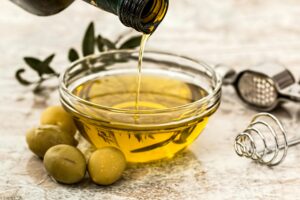
Mustard Oil:
Mustard oil is an edible vegetable oil extracted from mustard seeds, primarily from the seeds of the Brassica juncea (brown mustard) and Brassica nigra (black mustard) plants. It is commonly used in cooking and has several other applications due to its distinct flavor and various properties.
Here are key aspects of mustard oil:
- Production: Mustard oil is produced by pressing or grinding mustard seeds to extract the oil. In some traditional methods, the seeds are cold-pressed to retain their natural properties and flavor, while other processes involve heating or solvent extraction.
- Color and Flavor: Mustard oil has a pungent, strong flavor with a characteristic sharpness and a slightly bitter taste. It ranges in color from pale yellow to dark amber, depending on the processing method and the type of mustard seeds used.
- High Smoking Point: It has a relatively high smoking point compared to other cooking oils, making it suitable for deep-frying and high-temperature cooking methods prevalent in certain cuisines.
- Culinary Uses: Mustard oil is a popular cooking oil in parts of Asia, particularly in Indian, Bangladeshi, and Pakistani cuisines. It is used for sautéing, stir-frying, pickling, and as a flavor enhancer in curries, lentils, and various dishes. Additionally, it is used to season salads, marinades, and certain snacks.
- Medicinal Uses: In traditional medicine systems like Ayurveda, mustard oil has been used for its perceived medicinal properties. It is believed to possess antibacterial and antifungal properties and is used for massages and as a remedy for skin and hair care.
- Content and Safety: Mustard oil contains compounds like erucic acid, which, in some regions, has raised concerns about its safety for consumption in large quantities due to potential health risks. Regulations in various countries may limit the erucic acid content in mustard oil intended for consumption.
- Regional Popularity: While popular in certain regions for cooking, the use of mustard oil for consumption varies across different countries and may be subjected to regulations regarding its production and sale.
- External Uses: Mustard oil is also used topically in massage therapy for its warming properties. It’s believed to aid in muscle relaxation and promote blood circulation.
Due to its unique flavor and properties, the use of mustard oil can greatly influence the taste and authenticity of certain dishes, particularly in South Asian cuisines. However, its consumption and usage can be subject to regulations and recommendations based on the specific composition of the oil in different regions.
Health Benefits:
Mustard oil is believed to offer various health benefits, although it’s essential to note that scientific evidence supporting these claims is limited and further research is needed for conclusive findings. Some of the potential health benefits associated with mustard oil include:
- Heart Health: Mustard oil contains monounsaturated and polyunsaturated fats, including omega-3 and omega-6 fatty acids, which may contribute to heart health. These fats may help reduce bad cholesterol (LDL cholesterol) levels, thereby supporting cardiovascular health.
- Anti-inflammatory Properties: The presence of compounds like allyl isothiocyanate in mustard oil is believed to possess anti-inflammatory properties. It may aid in reducing inflammation when used topically or consumed in moderate amounts.
- Antibacterial and Antifungal Effects: Mustard oil contains natural compounds that have shown potential antibacterial and antifungal properties. When applied externally, it may help protect the skin against certain infections.
- Digestive Health: Mustard oil is sometimes used in cooking to aid digestion. It’s believed that the consumption of small amounts of mustard oil stimulates digestive juices and promotes better digestion.
- Hair and Skin Care: When used topically, mustard oil is known for its potential benefits for hair and skin. It may help moisturize the scalp, reduce dandruff, and improve hair texture. For the skin, it might help in moisturizing dry skin and treating certain skin conditions.
- Rich in Vitamins and Minerals: Mustard oil contains vitamins like A, D, E, and K, along with minerals such as calcium, magnesium, and potassium, which are beneficial for overall health.
- Potential Cancer-Fighting Properties: Some studies suggest that compounds present in mustard oil, particularly glucosinolates, may have cancer-fighting properties. However, more research is needed to validate these findings.
It’s important to use mustard oil in moderation due to its specific composition, including erucic acid content, which can be a concern in high amounts. Consumption should adhere to regional regulations and recommendations regarding its safety for cooking and dietary purposes. Always consult with a healthcare professional before using mustard oil for medicinal purposes or as a dietary supplement, especially if you have existing health conditions or are on medications.
Uses of mustard seed
Mustard seeds, with their distinct flavor and versatility, are used in various ways across culinary, medicinal, and even industrial applications. Here are some primary uses of mustard seeds:
- Culinary Uses:
- Spice in Cooking: Mustard seeds are a fundamental spice in many cuisines worldwide. They can be used whole, crushed, or ground, adding a distinctive flavor and aroma to dishes.
- Pickling: Mustard seeds are commonly used in pickling recipes, where they contribute flavor and help preserve vegetables or fruits.
- Condiment Production:
- Mustard Paste/Sauce: Mustard seeds, when ground and mixed with liquids like vinegar or water, produce mustard paste or sauce. These prepared mustards come in various types, including Dijon, yellow, brown, and spicy mustards.
- Flavor Enhancer:
- Seasonings and Spice Blends: Mustard seeds are often used in spice blends, adding depth and complexity to dishes such as curries, marinades, rubs, and pickling spices.
- Medicinal and Health Purposes:
- Traditional Medicine: In some traditional medicine systems, mustard seeds have been used for their perceived health benefits, including aiding digestion, reducing inflammation, and improving circulation. However, their medicinal use requires further scientific validation.
- Oil Production:
- Mustard Oil: Mustard seeds are used to produce mustard oil, which is used for cooking, seasoning, and as a base for some traditional medicinal and cosmetic applications.
- Industrial Uses:
- Manufacturing: Mustard seeds’ oil content makes them suitable for industrial applications, including in the production of biodiesel and as a base in some industrial lubricants.
- Home Remedies:
- Skin and Hair Care: Mustard oil, derived from mustard seeds, is sometimes used in home remedies for hair conditioning, scalp treatments, and skincare routines due to its moisturizing properties.
- Culinary Garnish:
- Garnishing: Whole mustard seeds are used as a garnish in certain dishes, particularly in Indian cuisine, where they are often tempered in hot oil to release their flavor before being added to a dish.
Mustard seeds’ versatility makes them a staple in many kitchens, adding flavor, aroma, and texture to a wide range of dishes, condiments, and culinary creations. Additionally, they are utilized in various cultural and traditional practices for their taste and potential health-related benefits.


